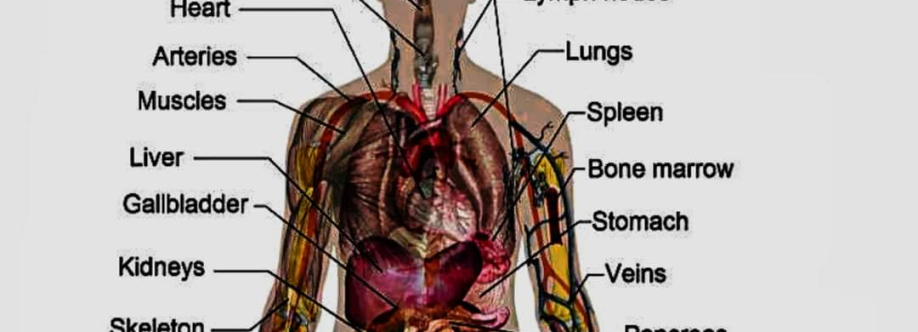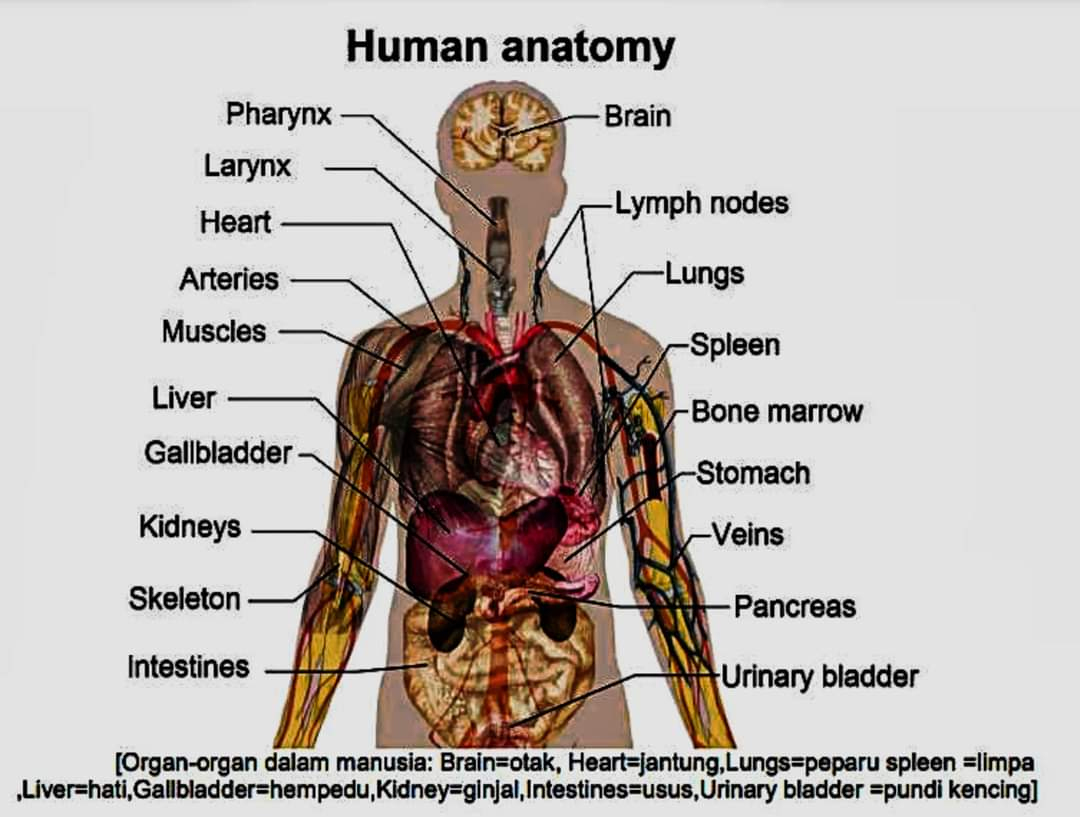Larynx
The larynx, also known as the voice box, is a cartilaginous structure located in the neck [[1]](https://poe.com/citation?messa....ge_id=97641396378&am It plays a crucial role in the production of sound and the regulation of airflow during breathing [[1]](https://poe.com/citation?messa....ge_id=97641396378&am The larynx connects the pharynx to the trachea, allowing air to pass through and enter the lungs [[1]](https://poe.com/citation?messa....ge_id=97641396378&am
The anatomy of the larynx consists of several pieces of cartilage [[1]](https://poe.com/citation?messa....ge_id=97641396378&am The three major cartilage pieces are the thyroid cartilage, epiglottis, and cricoid cartilage [[1]](https://poe.com/citation?messa....ge_id=97641396378&am The thyroid cartilage, which includes the prominent Adam's apple, is the largest piece of cartilage in the larynx [[1]](https://poe.com/citation?messa....ge_id=97641396378&am The cricoid cartilage forms a ring-shaped structure with a wider posterior region and a thinner anterior region [[1]](https://poe.com/citation?messa....ge_id=97641396378&am Additionally, there are three smaller, paired cartilages called the arytenoids, corniculates, and cuneiforms, which attach to the epiglottis and the vocal cords [[1]](https://poe.com/citation?messa....ge_id=97641396378&am
The larynx contains various structures that are involved in sound production. The glottis, composed of the vestibular folds (false vocal cords) and the true vocal cords, is responsible for producing sound [[2]](https://poe.com/citation?messa....ge_id=97641396378&am The vestibular folds are folded sections of mucous membrane, while the true vocal cords are membranous folds attached to the thyroid and arytenoid cartilages [[2]](https://poe.com/citation?messa....ge_id=97641396378&am The true vocal cords have free inner edges that can oscillate, producing sound when air passes through them [[2]](https://poe.com/citation?messa....ge_id=97641396378&am The size of the membranous folds of the true vocal cords can vary between individuals, resulting in different pitch ranges of voices [[6]](https://poe.com/citation?messa....ge_id=97641396378&am
During swallowing, the pharynx and larynx work together to ensure that food and beverages do not enter the trachea [[6]](https://poe.com/citation?messa....ge_id=97641396378&am The pharynx and larynx lift upward, allowing the pharynx to expand, and the epiglottis of the larynx swings downward, closing the opening to the trachea [[6]](https://poe.com/citation?messa....ge_id=97641396378&am This movement creates a larger area for food to pass through while preventing it from entering the trachea [[6]](https://poe.com/citation?messa....ge_id=97641396378&am
If you would like to visualize the anatomy of the larynx, you can refer to the 3D model available at this link: [[4]](https://poe.com/citation?messa....ge_id=97641396378&am It provides an interactive view of the larynx, allowing you to explore its structures in detail.
I hope this information helps you understand the role and anatomy of the larynx. If you have any further questions, feel free to ask!


Human Anatomy
Pharynx
The pharynx, also known as the throat, is a vital structure involved in both digestion and respiration [[1]](https://poe.com/citation?messa....ge_id=97640347802&am It serves as a passageway for food and air, receiving them from the mouth and nasal cavities [[1]](https://poe.com/citation?messa....ge_id=97640347802&am When food enters the pharynx, involuntary muscle contractions occur, closing off the air passageways [[1]](https://poe.com/citation?messa....ge_id=97640347802&am
The pharynx is a short tube composed of skeletal muscle and lined with a mucous membrane [[1]](https://poe.com/citation?messa....ge_id=97640347802&am It extends from the posterior oral and nasal cavities to the opening of the esophagus and larynx [[1]](https://poe.com/citation?messa....ge_id=97640347802&am The pharynx has three subdivisions: the nasopharynx, oropharynx, and laryngopharynx [[1]](https://poe.com/citation?messa....ge_id=97640347802&am The nasopharynx is primarily involved in breathing and speech, while the oropharynx and laryngopharynx are used for both breathing and digestion [[1]](https://poe.com/citation?messa....ge_id=97640347802&am
During swallowing, the muscles of the pharynx contract, raising and expanding the pharynx to receive the bolus of food [[2]](https://poe.com/citation?messa....ge_id=97640347802&am Once received, these muscles relax, and the constrictor muscles of the pharynx contract, forcing the bolus into the esophagus and initiating peristalsis [[2]](https://poe.com/citation?messa....ge_id=97640347802&am The soft palate and uvula rise reflexively to close off the entrance to the nasopharynx, preventing food from entering the nasal cavity [[2]](https://poe.com/citation?messa....ge_id=97640347802&am At the same time, the larynx is pulled superiorly, and the epiglottis folds inferiorly, effectively blocking access to the trachea and bronchi [[2]](https://poe.com/citation?messa....ge_id=97640347802&am
It's important to note that if food "goes down the wrong way" and enters the trachea, the natural reaction is to cough, which usually forces the food back into the pharynx and out of the trachea [[3]](https://poe.com/citation?messa....ge_id=97640347802&am
If you would like to visualize the pharynx and its subdivisions, you can refer to Figure 23.12 in [[1]](https://poe.com/citation?messa....ge_id=97640347802&am This diagram provides a clear illustration of the pharynx and its relationship to other structures.
I hope this information helps you understand the role and anatomy of the pharynx. If you have any further questions, feel free to ask!
Brain
The brain is a complex and fascinating organ that plays a crucial role in our everyday lives. As a teaching assistant, I can help you learn about various aspects of the brain and its functions.
One important topic we can explore is the anatomy and physiology of the nervous system [[1]](https://poe.com/citation?messa....ge_id=97250211994&am Understanding the structure and function of the brain is essential for healthcare providers, such as nurses and physical therapists, who may encounter patients with neurological conditions. By learning about the nervous system, you can relate its functions to specific locations in the brain and better understand how injuries or conditions can affect different abilities [[1]](https://poe.com/citation?messa....ge_id=97250211994&am
If you're interested in exploring the brain visually, I can provide you with interactive activities and models. For example, there are activities available that focus on the anatomy of the brain, including the ventricles of the brain and the cranial nerves [[2]](https://poe.com/citation?messa....ge_id=97250211994&am These activities use 3D models and interactive features to enhance your understanding of these structures.
Additionally, we can delve into the topic of neurotransmitters, which are chemical messengers in the brain that play a vital role in communication between neurons [[2]](https://poe.com/citation?messa....ge_id=97250211994&am Understanding neurotransmitters can help you grasp how different chemicals affect brain function and behavior.
If you're curious about real-life examples of brain-related conditions, we can explore case studies like the one involving a hereditary condition affecting the brain and spinal cord [[3]](https://poe.com/citation?messa....ge_id=97250211994&am This case study highlights the importance of understanding the functional divisions of the nervous system and how they relate to specific structures in the brain.
Lastly, I can provide you with resources that discuss brain activity and debunk common misconceptions, such as the claim that humans only use 10 percent of their brains [[3]](https://poe.com/citation?messa....ge_id=97250211994&am By exploring functional magnetic resonance imaging (fMRI) and other measurement techniques, you can gain insights into how the brain functions during different tasks.
Remember, learning about the brain is a journey, and I'm here to support you every step of the way. If you have any specific questions or areas of interest, feel free to let me know, and I'll be happy to assist you further.




